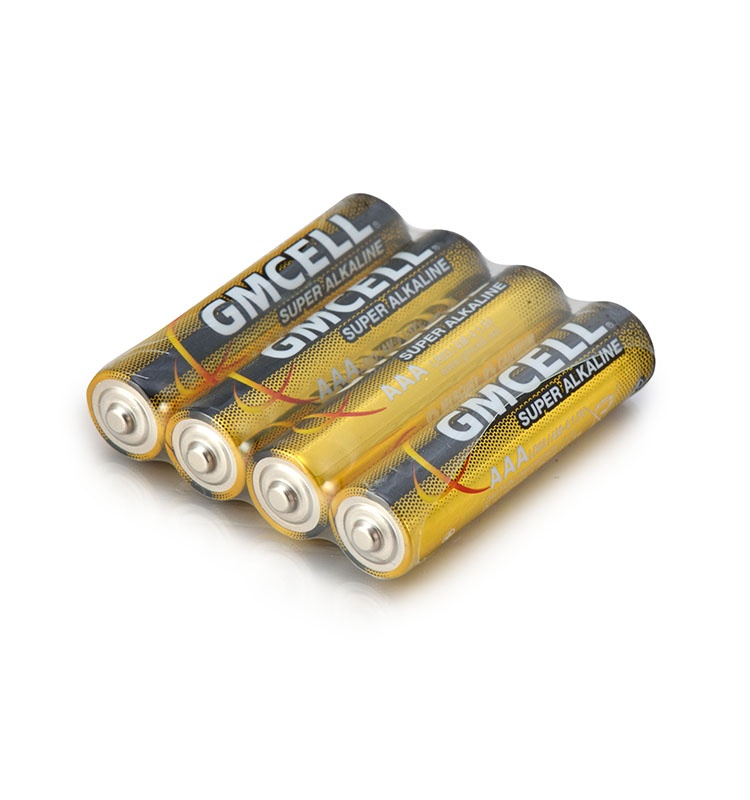What are the characteristics of alkaline batteries?
Alkaline batteries are a common type of battery in daily life, with the following main characteristics:
1. High Energy Density and Longer Endurance
- Ample Power: Compared to carbon-zinc batteries, alkaline batteries have a higher energy density (typically 3-5 times that of carbon-zinc batteries), providing more (sustainable power) for high-energy-consuming devices such as electric toys, digital cameras, and razors.
- Stable Discharge: They maintain a stable voltage output during discharge (standard voltage is 1.5V), and the voltage does not drop rapidly even when the battery is nearly exhausted, making them suitable for scenarios requiring continuous and stable power supply.
2. Wide Temperature Range
- Good High/Low Temperature Performance: Most alkaline batteries can operate in environments ranging from -20°C to 60°C (some brands like Duracell can adapt to -20°C to 60°C), suitable for outdoor equipment, low-temperature environments (e.g., outdoor remotes in winter), or high-temperature scenarios (e.g., devices exposed to long-term sunlight).
3. Leakage Prevention Design and High Safety
- Structural Optimization: They use steel or nickel-plated steel casings with sealing rings or leak-proof membranes (e.g., Nanfu's "dual leak-proof technology" or Duracell's nylon sealing ring) to reduce the risk of electrolyte (potassium hydroxide) leakage and protect device safety.
- Stable Long-Term Storage: They have a long shelf life (typically 5-10 years) and are less likely to leak even when idle for long periods, making them suitable for backup battery storage.
4. Enhanced Environmental Friendliness
- Mercury-Free Trend: Mainstream brands (such as Nanfu, Shuanglu, and Panasonic) have achieved mercury-free production of alkaline batteries, meeting environmental standards and reducing pollution to soil and water sources. They can generally be disposed of with household waste (however, sorting regulations may vary by region, so local guidelines should be followed).
5. Wide Range of Applicable Devices
- Preferred for High-Energy Devices: Suitable for devices requiring high-current discharge, such as:
- Electronic toys (electric vehicles, remote-controlled planes), game controllers;
- Smart home devices (smart door locks, cameras);
- Photography equipment (flashes, digital cameras);
- Medical devices (blood glucose meters, electric toothbrushes).
- Also Suitable for Low-Energy Devices: Such as remotes and clocks, though the cost-effectiveness may be lower than carbon-zinc batteries.
6. Cost-Effectiveness and Lifespan
- Higher Unit Price but Lower Overall Cost: Although the price per battery is higher than carbon-zinc batteries, their ample power and long lifespan make them more economical for long-term use in high-energy devices.
- Not Rechargeable: Alkaline batteries are single-use and cannot be recharged (forced charging may cause leakage or explosion; some brands offer "rechargeable alkaline batteries," but these should be distinguished carefully).
7. Technological Differences Between Brands
Different brands optimize performance through technology, for example:
- Nanfu's Power Ring Technology: Reduces power loss via an insulating layer to enhance endurance;
- Duracell's Leak-Proof Technology: Nylon sealing rings enhance tightness for extreme environments;
- Panasonic's High-Energy Formula: Optimizes electrolyte composition to extend discharge time.
Precautions
- Avoid Mixing New and Old Batteries: This may cause old batteries to leak.
- Remove Batteries from Unused Devices: Prevents electrolyte drying and leakage.
- Choose Reputable Brands: Inferior alkaline batteries may have higher leakage risks or overstated power capacity.
With their high energy, stability, and safety, alkaline batteries have become a mainstream choice for home and office use, especially for devices with high power demands. When selecting them, consider device type, usage frequency, and budget, and prioritize well-known brands.
Post time: Jun-10-2025





